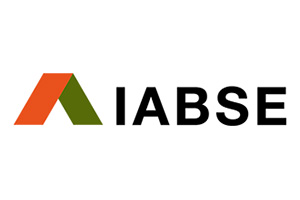-
Johns, Dorothy / Richman, Russell (2025): Dry-out behaviour of cross-laminated timber (CLT) edge conditions in roof assemblies: A field study. In: Structures, v. 72 (February 2025).
https://doi.org/10.1016/j.istruc.2025.108210
-
Johns, Dorothy / Richman, Russell / Lawrence, Cameron (2024): Assessing the effectiveness of cross-laminated timber (CLT) roof assembly moisture control and mitigation strategies: A field laboratory. In: Construction and Building Materials, v. 457 (December 2024).
https://doi.org/10.1016/j.conbuildmat.2024.139409
-
Shikatani, Maya / Richman, Russell / Skarupa, Cecilia (2024): Limits of a single surrogate model development methodology to represent housing stocks. In: Energy and Buildings, v. 325 (December 2024).
https://doi.org/10.1016/j.enbuild.2024.114986
-
Vimal, Vithusan / Richman, Russell (2024): Application of Deep Energy Retrofits to Allow Existing Housing in Toronto to Meet Passive House Certification. In: Journal of Architectural Engineering (ASCE), v. 30, n. 4 (December 2024).
https://doi.org/10.1061/jaeied.aeeng-1639
-
Shikatani, Maya / Richman, Russell (2024): Surrogate modelling methodology for predicting annual site energy for single-family wartime bungalow archetypes in Toronto. In: Energy and Buildings, v. 311 (May 2024).
https://doi.org/10.1016/j.enbuild.2024.114122
-
Johns, Dorothy / Vyas, Yash / Richman, Russell (2024): State-of-the-Art Review of Moisture Content Sensor Deployment in Mass Timber Construction. In: Journal of Architectural Engineering (ASCE), v. 30, n. 2 (June 2024).
https://doi.org/10.1061/jaeied.aeeng-1638
-
Cochon, Noel / Richman, Russell (2024): Towards quantifying the air leakage through cross-laminated timber. In: Case Studies in Construction Materials, v. 20 (July 2024).
https://doi.org/10.1016/j.cscm.2023.e02748
-
Luong, David / Richman, Russell / Touchie, Marianne (2022): Towards window state detection using image processing in residential and office building facades. In: Building and Environment, v. 207 (January 2022).
https://doi.org/10.1016/j.buildenv.2021.108486
-
Hasan, Javeriya / Richman, Russell / Horvat, Miljana (2021): Application of traditional frost dilatometry methodology on half brick samples to identify the critical degree of saturation. In: Construction and Building Materials, v. 313 (December 2021).
https://doi.org/10.1016/j.conbuildmat.2021.125350
-
Lawrence, Cameron R. / Richman, Russell / Kordjamshidi, Maria / Skarupa, Cecilia (2021): Application of surrogate modelling to improve the thermal performance of single-family homes through archetype development. In: Energy and Buildings, v. 237 (April 2021).
https://doi.org/10.1016/j.enbuild.2021.110812
-
Richman, Russell / Simpson, Rob (2016): Towards quantifying energy saving strategies in big-box retail stores: A case study in Ontario (Canada). In: Sustainable Cities and Society, v. 20 (January 2016).
https://doi.org/10.1016/j.scs.2015.09.007
-
Williams, Blair / Richman, Russell (2017): Laboratory dilatometry and field test to assess durability of masonry. In: Journal of Building Physics, v. 40, n. 5 (February 2017).
https://doi.org/10.1177/1744259116649364
-
Stahlbrand, Ian / Richman, Russell (2012): Simulation of a convective loop for the Nested Thermal Envelope Design™ low-energy house. In: Journal of Building Physics, v. 36, n. 1 (June 2012).
https://doi.org/10.1177/1744259112445733
-
Urquhart, Robin / Richman, Russell / Finch, Graham (2015): The effect of an enclosure retrofit on air leakage rates for a multi-unit residential case-study building. In: Energy and Buildings, v. 86 (January 2015).
https://doi.org/10.1016/j.enbuild.2014.09.079
-
So, Nicholas / Richman, Russell (2016): A high level method to disaggregate electricity for cluster-metered buildings. In: Energy and Buildings, v. 111 (January 2016).
https://doi.org/10.1016/j.enbuild.2015.11.019
-
Jermyn, Denver / Richman, Russell (2016): A process for developing deep energy retrofit strategies for single-family housing typologies: Three Toronto case studies. In: Energy and Buildings, v. 116 (March 2016).
https://doi.org/10.1016/j.enbuild.2016.01.022
-
Carlsson, Matt / Touchie, Marianne / Richman, Russell (2019): Investigating the potential impact of a compartmentalization and ventilation system retrofit strategy on energy use in high-rise residential buildings. In: Energy and Buildings, v. 199 (September 2019).
https://doi.org/10.1016/j.enbuild.2019.06.035
-
Khemet, Bomani / Richman, Russell (2021): An empirical approach to improving preconstruction airtightness estimates in light framed, detached homes in Canada. In: Journal of Building Engineering, v. 33 (January 2021).
https://doi.org/10.1016/j.jobe.2020.101433
-
Khaled, Khaled / Richman, Russell (2020): Thermal performance impacts of vented EIFS assemblies in the cold climate of Southern Ontario. In: Journal of Building Engineering, v. 31 (September 2020).
https://doi.org/10.1016/j.jobe.2020.101446
-
Andres, Patrick Werner / Richman, Russell (2020): Life Cycle Operating Carbon Impact of a Standardized Passive House in Various Canadian Climates. In: Journal of Architectural Engineering (ASCE), v. 26, n. 2 (June 2020).
https://doi.org/10.1061/(asce)ae.1943-5568.0000393
-
Chen, Felix / Richman, Russell (2020): The effect of shallow depth horizontal ground loop clearance on the heat loss of a single family residential dwelling. In: Journal of Building Engineering, v. 29 (May 2020).
https://doi.org/10.1016/j.jobe.2020.101185
-
Khemet, Bomani / Richman, Russell (2020): Towards a methodological approach to builder specific, preconstruction airtightness estimates for light-framed, detached, low-rise residential buildings in Canada. In: Journal of Building Engineering, v. 29 (May 2020).
https://doi.org/10.1016/j.jobe.2019.101140
-
Zhang, Kevin / Richman, Russell (2020): Parametric analysis of moisture sorption isotherms for wood sheathing using hygrothermal modelling. In: Journal of Building Engineering, v. 28 (March 2020).
https://doi.org/10.1016/j.jobe.2019.101047
-
Ebanks, Peta-Gaye / Richman, Russell (2019): Towards harmonizing the NFRC and CEN window performance simulation methods. In: Canadian Journal of Civil Engineering / Revue canadienne de génie civil, v. 46, n. 8 (August 2019).
https://doi.org/10.1139/cjce-2017-0636
-
Richman, Russell / Bentz, Evan / Jermyn, Denver / Sun, Chang (2017): Structural and Durability Analysis of a Novel Re-roofing Concept. In: Engineering Structures and Technologies, v. 9, n. 4 (December 2017).
https://doi.org/10.3846/2029882x.2017.1404939
-
Richman, Russell / Pressnail, Kim D. / O'Malley, Lori / Liebenow, Nastassja (2010): The Reduced Gradient Approach (RGA): An Alternate Method to Optimizing Humidity Conditions in House Museums in Cold Climates. In: International Journal of Architectural Heritage, v. 5, n. 1 (November 2010).
https://doi.org/10.1080/15583050903131363
-
Yip, Amanda / Richman, Russell (2015): Reducing Ontario's new single-family residential heating energy consumption by 80% by 2035: economic analysis of a tiered framework of performance targets. In: Canadian Journal of Civil Engineering / Revue canadienne de génie civil, v. 42, n. 12 (December 2015).
https://doi.org/10.1139/cjce-2015-0234
-
Richman, Russell / Zirnhelt, Hayes / Fix, Stuart (2014): Large-scale building simulation using cloud computing for estimating lifecycle energy consumption. In: Canadian Journal of Civil Engineering / Revue canadienne de génie civil, v. 41, n. 3 (March 2014).
https://doi.org/10.1139/cjce-2013-0235
-
Blaszak, Katarzyna Marzena / Richman, Russell (2013): Prioritizing Method for Retrofitting Toronto's Single-Family Housing Stock to Reduce Heating and Cooling Loads. In: Journal of Architectural Engineering (ASCE), v. 19, n. 4 (December 2013).
https://doi.org/10.1061/(asce)ae.1943-5568.0000102
-
Kani-Sanchez, Cassandra / Richman, Russell (2017): Incorporating variable refrigerant flow (VRF) heat pump systems in whole building energy simulation – Detailed case study using measured data. In: Journal of Building Engineering, v. 12 (July 2017).
https://doi.org/10.1016/j.jobe.2017.06.016



